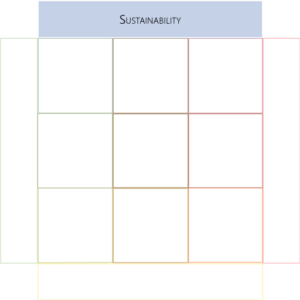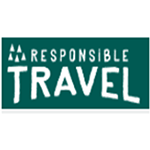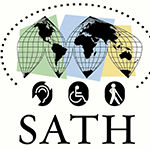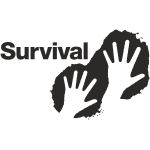
Tourism Destination: 21 Questions for revealing business opportunities

TOURISM DESTINATION
21 Guiding Questions to drive Small and Medium-sized Tourism Enterprises (SMTEs) to Understand Better the Tourism Destination
What are the process partners, resource providers, logistics, distribution channels, and communication channels at the destination with which we can form alliances to explore new markets?
Key to Success
For Tourism Destinations, in this section, we would like to make sure that Small and Medium-sized Tourism Enterprises (SMTEs) should be aware of the following:
- The tourism industry contributes to local economies and their impact on natural resources and ecosystems. This can help travelers make more sustainable and responsible travel choices.
- Operating within the legal framework and respecting the natural environment and local communities is essential.
- The tourism infrastructure, such as transportation, accommodation, and attractions, is essential to ensure that the business can provide the best possible service to its customers.
Accomplishments
In this step, we’ll:
- Identify the most critical destination characteristics that impacted the business.
- Identify the market size (offer and demand).
- Highlight the critical success factors of the point of interest and their advantages.
- Find the strengths and weaknesses of the Site.
Time-Saving Tools
We’ll complete all sections of this chapter more quickly if we have any of the following handy:
- The destination market plan and strategic plan.
- The sustainable development plan of the location.
- Our business plan, our business objectives, and our strategic business plan.
- The area laws are driving tourism.
- The local inventory and other research.
- The trade travelers and other relevant stakeholders.
- Demand research and an analysis of the traveler demand profile.
- Research the potential customers who live in the area.
- Research the potential customers who live 3 hours away from the area.
- 2030 Agenda for Sustainable Development
- Sustainable Development Goals (SDGs).
- Sustainable Development Goals strategies (SDG).
- Some sustainable development plan or guide aligned with SDGs.
- Research about the tourism industry.
- Another specific analysis applied to our case.
- All documents could find relevant information.

Presentation
Each destination is unique and requires a tailored approach to marketing and management. Consequently, businesses must consider the local culture, customs, and preferences of the destination, as well as the needs and expectations of their target travelers. In addition, tourism enterprises need to understand the tourism infrastructure and competitive landscape of the destination, along with the regulatory environment and any potential risks or challenges.
By understanding these factors and tailoring their approach accordingly, tourism enterprises can effectively market their products and services to travelers, build strong relationships with local stakeholders, and contribute to the sustainable development of the destination.
Moreover, the destination’s characteristics are crucial for success in the tourism industry. Understanding the features of the location we’re marketing will assist us in creating a compelling narrative around it. Furthermore, a systematic, comprehensive approach allows one to develop effective strategies that resonate with potential travelers. Besides, one must be able to identify hidden business opportunities and formulate unexplored niches.
We can think about the most relevant destination characteristics directly impacting our business, including but not limited to:
- Destination demand
- Destination offering
- Trade
- Stakeholders
- Profile
- Authenticity
- Sense of Place
- Branding
- Urban functions
- Installed systems (infrastructure)
- Marketing positioning strategy (price, competitive advantage, target market segment, benefits offered)
- Public tourism policies and laws: fiscal, environmental, labor, and more
- Destination Management Organizations (plans, promotion, training, and more)
- Butler’s tourism destination life cycle
- Doxey’s irritation
- And more
In conclusion, destinations can offer authentic and responsible experiences that align with travelers’ values and preferences by gaining insights into the local culture, environment, and community.
GUIDING QUESTIONS
How can we promote responsible and sustainable practices in our destination? To begin with, implementing eco-friendly initiatives and supporting local communities will contribute to small tourism enterprises' long-term success and reputation within our destination.
YScala
A suggestion of guiding questions that are not intended to exhaust the topic:
- What infrastructure supports tourism activity (hotels, resorts, restaurants, airports, ports, transportation, and more)? Assessing the current state of accommodations, transportation, and other amenities will help identify areas for improvement or expansion.
- What is the destination tourism demand?
- What are the different traveler segments that the destination aims to target? Understanding the target audience’s demographics, interests, and preferences will enable the location to tailor its offerings to match its needs.
- What is destination tourism offering?
- Which tourism products attract travelers with common interests (e.g., historic sites, trails, parks, beaches, mountains, and more)?
- What are the primary attractions and experiences that draw travelers to the location? How can our business leverage these attractions to attract customers?
- What are the local culture and customs in the area, and how can our business respect these traditions in its operations and customer interactions? How does the local culture and community in the location impact our business, both in terms of opportunities for collaboration and potential challenges?
- Are the markets from which the destination aims for the traveler segment to draw increasing or declining?
- How do the overall reputation and brand of the destination affect the demand for our products and services? For example, is the location well-known and respected for its tourism offerings?
- How does the location differentiate itself from its competitors? Establishing a clear, unique selling proposition (USP) will help the place stand out in the competitive tourism market.
- What is the current and future outlook for tourism in the destination, including trends in traveler numbers, spending, and behavior? How can our business prepare for and adapt to these trends?
- What is the level of government support and investment in tourism development in the location, and how does this impact the availability of resources and opportunities for growth?
- What are the opportunities for collaboration with other businesses, organizations, or government agencies in the location to enhance the overall traveler experience and promote sustainable tourism practices?
- What is the level of awareness and adoption of sustainable tourism practices in the location, and how does this impact our business operations and reputation?
- Who are the other essential stakeholders?
- What is the local economic and social context in which our business is located?
- How does the marketing and promotion of the location impact our business, both in terms of access to potential customers and the overall image and perception of the destination?
- How does the destination’s level of traveler satisfaction and repeat business impact our business operations and growth potential?
- What is the overall quality and availability of tourism infrastructure in the location, including transportation, accommodation, other services, and attractions? How do these factors impact the traveler experience and our business operations?
- How can our business collaborate with other stakeholders in the area to enhance the traveler experience?
- What local regulations and laws affect our business, such as licensing requirements, zoning restrictions, and environmental regulations?
Small and Medium-sized Tourism Enterprises (SMTEs) can build strong awareness about their destination by asking these questions and working through the answers to developing capacities, skills, advantages, partnerships, and more.
Offering more information
Besides the 21 guiding questions we’ve provided to help us evaluate and improve our tourism destination, we’ve compiled a list of valuable resources to further our knowledge and understanding of destination management. Notably, these resources offer insights into best practices, sustainability, marketing, and more, catering to the needs of tourism professionals and stakeholders. Consequently, by exploring these links, you’ll be better equipped to make informed decisions and create a thriving, competitive, and sustainable destination for travelers from around the world.
World Tourism Organization (UNWTO) – This is the official website of the United Nations World Tourism Organization. They provide valuable information, statistics, and resources on various aspects of tourism.
Destination Management Handbook – This handbook is a comprehensive guide to destination management and offers best practices, case studies, and resources for tourism professionals.
Sustainable Tourism – This website provides information and resources on sustainable tourism, including case studies, best practices, and tools for tourism businesses and destinations.
Global Sustainable Tourism Council (GSTC) – The GSTC establishes and manages global sustainable tourism standards, providing valuable resources for tourism destinations and businesses seeking to implement sustainable practices.
World Travel & Tourism Council (WTTC) – The WTTC offers research, policy recommendations, and resources related to the travel and tourism industry.
As you conclude reading this orientation post, we’d like to invite you to explore the other insightful articles in our Business Tailor 4 Sustainable Tourism Develop Management (BT4-STDM) Tool. Furthermore, we encourage you to engage with our community, share your perspectives, and contribute to this meaningful conversation by commenting below. In doing so, your experiences and ideas can help others in their sustainable tourism development management journey.
Table of Contents
Let your like and recommend this post to improve your audience!
Share this post with friends, colleagues, or anyone else who might be interested.
Comments:
We invite you to engage with our community, share your perspectives, and contribute to this meaningful conversation by commenting below. Your experiences and ideas can help others in their sustainable tourism development management journey.










